Employee Safety and Health
Safety and Disaster Prevention
The Stanley Group is working together as one to improve areas at risk of occupational accidents and prevent actual occurrence through regular checkups by members of the Health and Safety Committee and by sharing examples of other offices, etc.
We also conduct regular disaster prevention drills to ensure the safety of our employees. Meanwhile, the emergency contact network of all employees is regularly updated, establishing a system to quickly check safety in case of emergency.
Rate of Work-Related Deaths Caused by Industrial Accidents
- FY2021 0 %
- FY2022 0 %
- FY2023 0 %
Health Management
The Stanley Group Health Declaration
The Stanley Group aims to be a "competitive" company by maximizing the value of light and contributing to the safety and security of people's lives. In order to achieve this, it is essential for each and every employee of the Stanley Group to have the spirit of daring to "outshine light," to boldly take on challenges without fear of failure, and to fully demonstrate their rich individuality and abilities.
In order to maintain and promote the health of our employees, which is indispensable for the sustainable development of the company, we have established the "Stanley Health Declaration" and are making concerted company-wide efforts.
What we aim to achieve through health management
We, the Stanley Group, aim to be a "competitive" company where each and every employee is healthy and energetic in mind and body, and where they can fully demonstrate their rich individuality and abilities.
We have created a "Health Management Strategy Map" that clarifies the links between management issues we want to solve through health management and health investment measures, and we are actively promoting these measures.
Through health management, we aim to ensure that employees are highly motivated to work, that they are able to perform to their maximum, and that they can work continuously without absenteeism or leaves of absence, etc. We will improve work engagement, presenteeism, and absenteeism as key indicators.
We have set medium- to long-term targets for work engagement and presenteeism, while for absenteeism we have set targets that at least maintain the recent average, and we are continuously verifying and improving these targets.
- Work engagement target: White 500 average of 5.20 in FY2028
Presenteeism target: 17.4% same-business average within the top 100 deviation value in the Health Management Survey (FY2023) in FY2028
Absenteeism target: 0.79% or less of the average of the last four fiscal years
Health Management Promotion Structure
The President and Representative Director serves as the Health Management Supervisor, while the Executive Officer in charge of Human Resources serves as the Health Management Promotion Supervisor. The Human Resources Department acts as the Secretariat for promoting health management in cooperation with various stakeholders.
We plan and coordinate health policies with occupational physicians, public health nurses, and health insurance societies through secretariat meetings held three times a month.
Together with the General Affairs Department (with personnel assigned at each business site) and the labor union, we promote health policies through bimonthly meetings of health management practitioners and daily information-sharing. In addition, semiannual face-to-face group meetings are held to review overall initiatives and share future plans.
To further promote the penetration of health policies, detailed discussions are held at each business site regarding the content and implementation of major initiatives. The Safety and Health Committee also plays a role in advancing health management by sharing information on health policies and events.
| Human Resource Department | Secretariat for health management promotion, planning of company-wide measures, and overall progress management |
|---|---|
| General Affairs Department | Planning of non-smoking and cafeteria policies, promotion of company-wide measures, and planning and implementation of site-specific initiatives |
| Occupational physicians and public health nurses | Employee health management, support for planning health policies, and support from a professional standpoint |
| Health insurance societies | Development and implementation of data health plans, support for health policies |
| Labor unions | Promotion of health measures (among union members) |
| The Safety and Health Committee | Planning and promotion of measures to maintain and improve employee health |
A view of the Health Management Practitioners' Meeting (face-to-face group meeting)

Well-Sta 7 (Well-being Stanley) Health Promotion Plan
In promoting health management, Stanley has defined "Well-Sta 7" as seven desirable health behaviors to maintain and promote the physical and mental health of employees, and is setting indicators and developing health measures linked to these behaviors. The "Well-Sta 7" are diet, exercise, abstaining from smoking, alcohol consumption, sleep, weight, and stress, all of which are essential for improving physical and mental health and work performance.
Well-Sta 7 indicator settings
To evaluate how Well-Sta 7 is being promoted, we use indicators based on the implementation status of each item. Each item is given 1 point if it is being put into practice, and 0 points if it is not. The total Well-Sta 7 score is calculated from 0 to 7 points, and the status of promotion is monitored company-wide and at each business site. (These indicators were established in the second half of FY2023, and policies were fully implemented in FY2024, with verification and improvement to be made going forward.)
Analysis of FY2023 data shows that employees with better Well-Sta 7 scores have better mental and physical health and better work performance, and we believe it is important to make improvements in each of the Well-Sta 7 items. In terms of the Well-Sta 7 score, some employees improve over the course of a year, while others deteriorate. Therefore, we believe it is important for each and every employee, regardless of whether their Well-Sta 7 scores are good or bad, to reflect on their own issues and proactively participate in Well-Sta 7 policies.
Relationship between Well-Sta 7 score and health condition
-
■Rate of non-optimally weighted persons
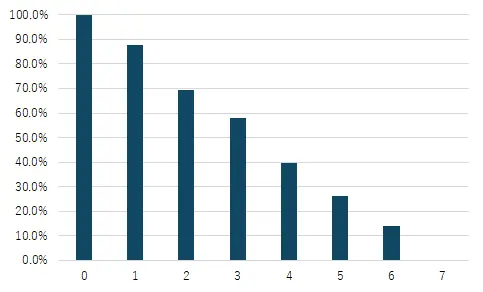
-
■rate of highly stressed persons
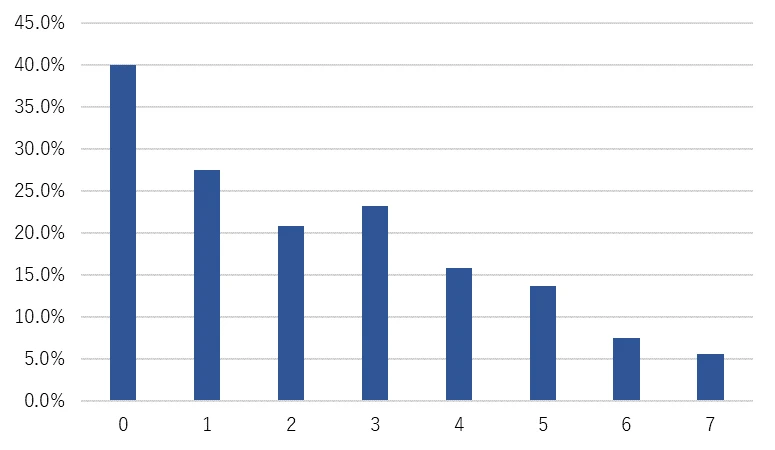
Relationship between Well-Sta 7 score and job performance
-
■Work engagement
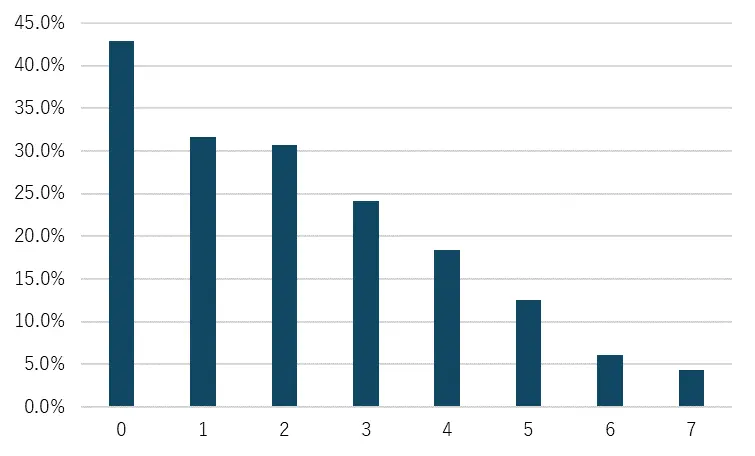
-
■Presenteeism
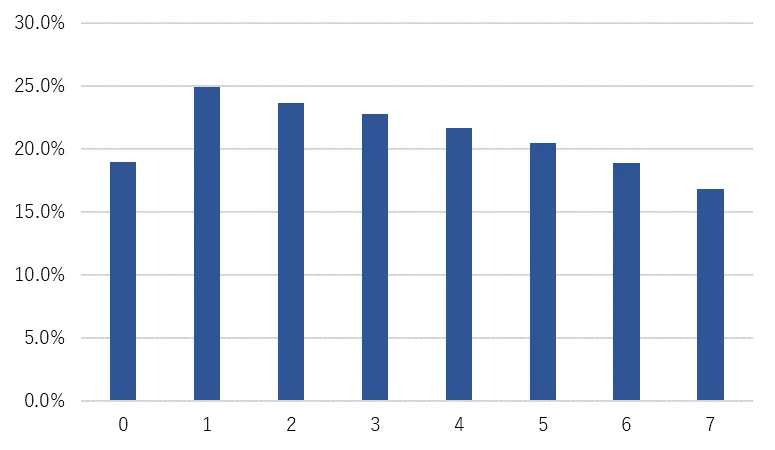
Policies for promotion of Well-Sta 7
-
1Diet
- Maintaining a healthy eating environment (cafeteria, boxed lunches, vending machines, stationary cafeteria)
- Measurement of vegetable intake
-
2Exercise
- Refreshing workouts
- Walking events
- Physical fitness test events
- Women's Professional Golfers Stretch Event
-
3Abstaining from smoking
- Education to encourage abstention from smoking
- Abstaining from smoking during core time
- Online program to encourage people to abstain from smoking
- Team events for quitting smoking
-
4Alcohol consumption
- Education regarding alcohol consumption
-
5Sleep
- Education regarding sleep
-
6Weight
- Health guidance for persons with BMI of 30 or higher
-
7Stress
- Self-care and line care training
- Improvement of high-risk workplaces
-
8Other
- Health checkups and thorough physical examinations (checkups at critical junctures)
- Education on how to read and utilize medical examinations
- Education regarding gender-specific health issues
-
9General
- Health apps and health points
- Health consultation services
- Tiered education
- Health columns by professionals
Measures to help Well-Sta 7 permeate company-wide
-
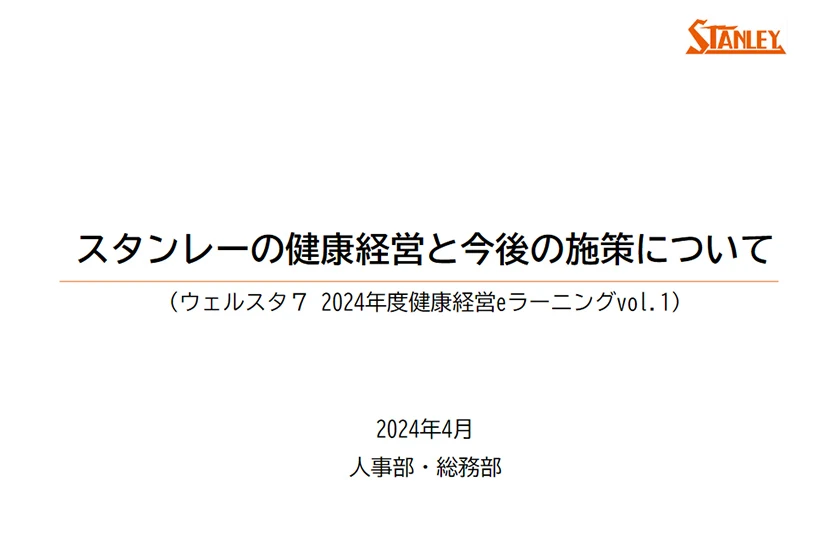
Videos explaining Health Management Policy
-
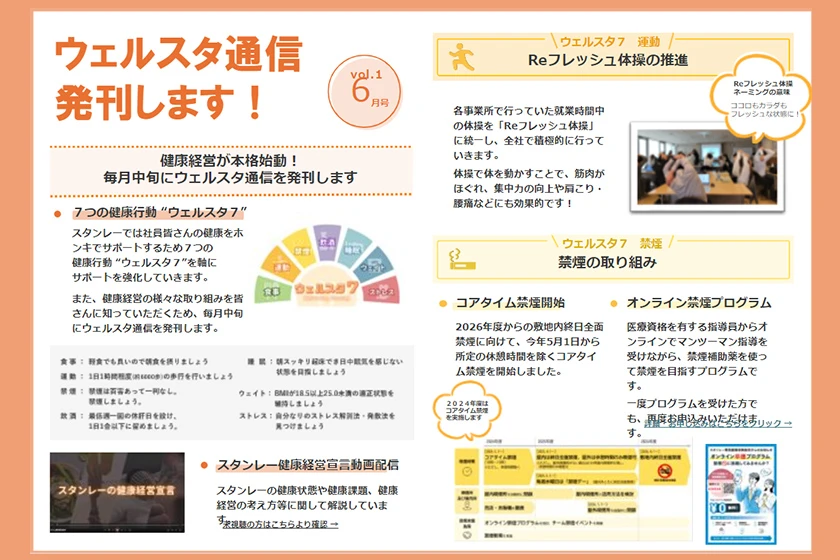
Health management e-learning
-
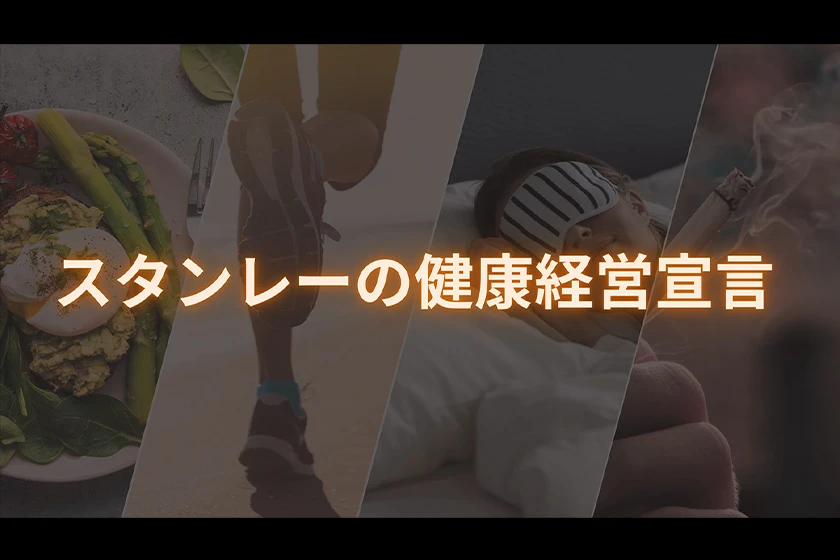
Well-Sta News (monthly publication)
KPI Targets and Results
Targets and results for each KPI linked to the Health Management Strategy Map
We set the indicators defined in the Health Management Strategy Map as KPIs and measure the effectiveness of policies in order to make improvements.
From FY2022 to FY2023, the demand for work increased while work resources decreased. Partly as a result of this, we were unable to improve our lifestyle scores, resulting in an increase in the rate of non-optimally weighted persons and the rate of persons with poor health management. The risk of mental health problems also remained high, and absenteeism increased.
In light of this current situation, from the second half of FY2023 onward, we are accelerating our health management initiatives and, as mentioned above, we are further strengthening our health policies and promoting policies to ensure company-wide permeation of health management. As a result, the understanding and appreciation of health management has increased significantly, and a foundation is being formed for the promotion of health management. We will continue to promote meaningful initiatives and maximize the effects of health management while monitoring the permeation of health management among employees.
External Evaluation
As a result of the above efforts, Stanley was recognized as one of the "2025 Certified Health & Productivity Management Outstanding Organizations (Large Enterprise Category)" awarded by the Ministry of Economy, Trade and Industry and the Nippon Kenko Kaigi.

Work Style Reform
Aiming for a better work-life balance and enhanced productivity, we are driving “work style reform” efforts which include the following:
Addressing long working hours
We are ensuring at least eight hours’ interval after work until the next work session, encouraging employees to use their annual leave, and offering consultation with occupational physicians to employees whose overtime hours have exceeded the benchmark.
Recharge leave system
This system grants employees five consecutive days of paid leave or a total of 20 days of paid leave, together with a subsidy of 50,000 yen or 200,000 yen, for every five years of service. It helps employees revitalize their energy both mentally and physically, reflect on their work life at the Company, redesign their work plan into the future, or develop their own creativity.
Telework system
We officially introduced this system in April 2021. We have prepared and utilized an operation manual to ensure that employees can use the system correctly and effectively.
Kurumin Certification & Platinum Kurumin Certification
We obtained the Kurumin Certification in 2020 and achieved the Platinum Kurumin Certification in May 2025 by meeting higher standards.
Moving forward, we will continue to support the balance between work and childcare, and strive to create a workplace culture that encourages employees to take on challenges and grow. Our goal is to build an environment where each individual can fully demonstrate their abilities.
